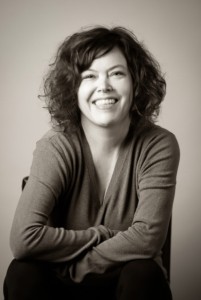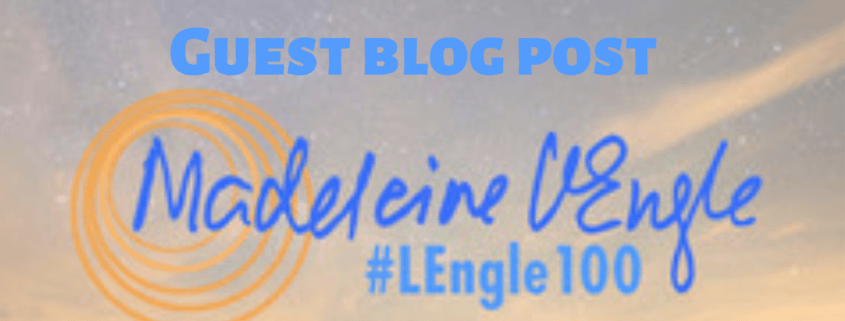Guest blog post: How to recognize miracles
By Molly Cantrell-Kraig
I blame Charlton Heston.
When I was a little kid, the yearly screening of “The Ten Commandments” was anticipated in our household for a number of reasons. The first of which was its role as a rite of passage to, if not adulthood, at least big kid status, proved through the ability to stay awake through the entire thing. Alas, for many years, my brothers and I would consistently conk out on the living room floor somewhere around Yul Brynner’s “So let it be written; so let it be done” edict.
We yearned for the year when we could finally last until the second reason: the special effects, chief among them the parting of the Red Sea. Now this was a miracle!! Epic. Sweeping. Monumental. Supernatural and supernal. Seeing Chas up there on the rock, serving as the conduit for what God wrought below spoiled me for quite a while where miracles were concerned.
Would you recognize a miracle if you saw it?
Most of the time we want big and flashy, or at least it’s what we expect from our miracles. The quiet ones like breathing, flowers blooming or a choice parking spot opening up for us on a rainy day? Meh.
Folks who follow me on twitter will note that I sign off most evenings with #poetry as my #goodnight tweet. One of my favorite poets is Walt Whitman, and his poem, Miracles is one of the reasons why. The poem lists a number of everyday events, observances, and experiences, all of which exist within a confluence of everything: “The whole referring, yet each distinct and in its place.”
As an example, for the women reading this, if (or when) you were pregnant, did it seem as though every other woman on the planet was pregnant? This perception grew from your awareness. You were attuned to pregnancy and everything that involves bearing a child; hence, you recognized this experience in those who surrounded you. It’s the same with the awareness of miracles. The more miracles you acknowledge, the more of them that you will see.
Miracles are generated at the intersection of our internal and external worlds, through syncing the inner and outer environments. Through the symbiotic action of improving ourselves, we improve our environs by default. In so doing, we affect change and provide the catalyst for miracles.
For the sake of discussion, let’s assume that miracles are evidence of the Divine. When we take active steps to nurture and develop our higher selves, are we not engaging the divine within?
Taken a step farther, by engaging divinity, are we not giving it the opportunity to flex itself and to manifest itself in our lives?
You are the miracle.
You’re a confluence of DNA, tRNA and other helix models twirling, replicating and creating worlds. The fact that you exist at all is, in and of itself, a miracle. Your thoughts, desires, mechanical dexterity and talents are all finely orchestrated cellular wonders. You are a carbon-based life form with sentience, a conscience, and an ability to decide what your life is going to be. Every morning you have another 24 hours to make something happen.
Every morning is your birth day.
Today’s exercise is to give thanks for every miracle you can recognize, from the mundane to the phenomenal.

Reading L’Engle’s Time Quintet fundamentally changed the way a nine-year-old Molly viewed the intersection of divinity, science, and love. Through reading L’Engle’s books, Molly could envision a universe beyond the borders of her small town, teleporting her into a realm where love was recognized as the binding and universal force that supports and connects worlds. Seeing Meg as a flawed, yet determine heroine gave Molly an early role model in learning how to overcome one’s fears and to take risks. The chapter Miracles is an example of the confluence of love, divinity and science that extends throughout her most recent book, Circuit Train Your Brain: Daily Habits to Build Resilience. Comprised of brief chapters designed to help identify and reinforce the power each of us has within us to cultivate resilience, the book draws upon her personal experiences of overcoming numerous obstacles in her personal and professional life.
An author, media consultant, life coach and speaker, Molly Cantrell-Kraig has been recognized as one of CNN’sVisionary Women, profiled by the Christian Science Monitor, and the Shriver Report. Cantrell-Kraig has also been interviewed on the Women’s Media Center and the BBC, speaking on such topics as women, independence, gender roles and life transitions. From her beginnings as a single mother on welfare, Cantrell-Kraig is a self-described work in progress whose focus is on helping others achieve their goals by sharing her own experiences. You can find her on Twitter and Instagram as @mckra1g or on the web at www.mollycantrellkraig.co .
***
Do you have something you’d like us to share with our blog readers? We are taking submissions for guest blog posts. Email: social [at] madeleinelengle [dot] com



